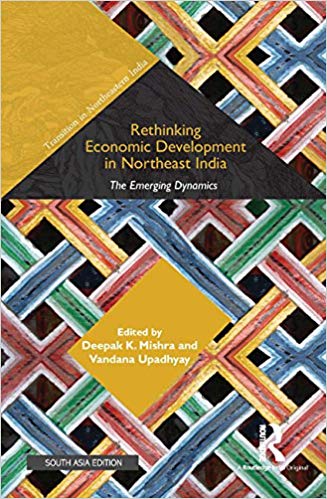Not withstanding some scholarly works on disparate issues, works that systematically engage with the process of economic development of the Northeast region (NER) of India are few and far between. This book fills this gap to a large extent by examining the implications of economic reforms initiated in 1991 in India for economic development in NER. The editors in the ‘introduction’ locate the NER in a globalizing India in the light of the debate on ‘globalization and marginalization’, and provide a brief outline of the book.
The development trajectory of the NE region that has unfolded as impact of and responses to the ongoing process of globalization is examined, providing an account of the possible turn that this process may take if the promised benefits of the Look East Policy (LEP) are realized. ‘Globalization and the Indian Himalayan States: Mitigating or Accentuating Marginalization?’ by TS Papola suggests that the NE States have gained very little from globalization in terms of external trade and investment, and in fact, the region faces the possibility of further economic marginalization. Though simple and limited in scope, the analysis provides useful insights into the recent development process of the region. Atul Sarma’s paper, ‘Economically Integrating Northeast India with Southeast Asia’ analyses how the NE region as the gateway of India is poised to gain through market integration with South and East Asian countries once the LEP is fully implemented. Piecing together historical information, the author provides valuable lessons on types of market integration, which may fetch benefits for the people of the region. ‘India’s Entry into the ASEAN: Some Implications for the Northeast’ by Alokesh Baruah echoes similar concerns.

